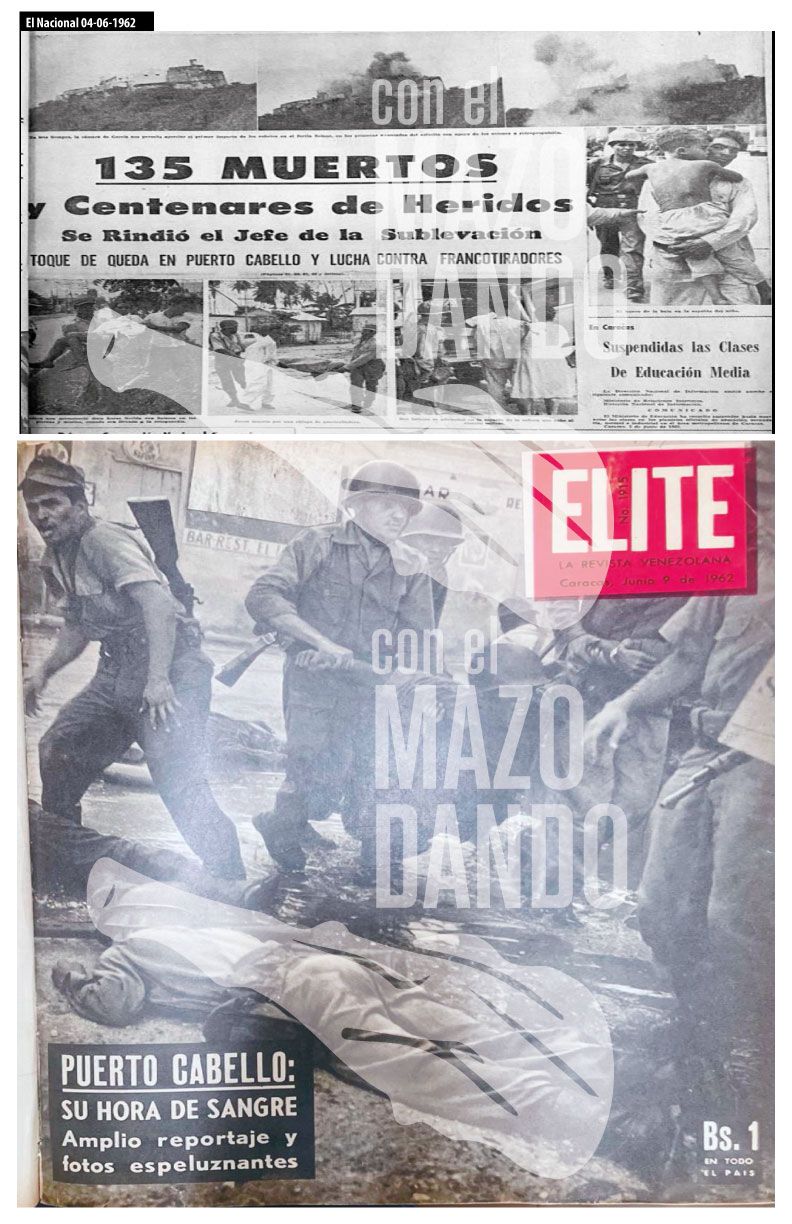IF THERE WERE SHOOTINGS IN PORTEÑAZO MORE THAN 400 DEAD AND 700 INJURED
Published at: 05/06/2024 09:00 PM
(EL NACIONAL, Latest News, June 4, 1962+ÉLITE, June 9, 1962)
- On June 2, ****1962, less than a month after El Carupanazo, El Porteñazo occurred. The captains of the navy: Manuel Ponte Rodríguez, Pedro Medina Silva and Víctor Hugo Morales; together with youth cadres of the PCV and the MIR, took up arms against the bipartisan dictatorship of the Punto Fijo.
- It was a true four-day pitched battle, with the unobjectionable advantage of the government that it had air and ground superiority. The planes, F-38 Le Sabre, bombed the radio station and Fort Solano, the last stronghold of the uprising, thus nullifying the firepower of the elevations.
- One day after the coup, when the uprising was practically crushed, in the La Alcantarilla sector, the courage demonstrated in the resistance of the students of the Miguel Peña High School persisted.
- The students, in solidarity with the rebellious soldiers, arrested four digepoles, which they tied up outside the high school to prevent the campus from being bombed.
- In response, the Carabobo Battalion, under orders of Rómulo Betancourt, under the command of General Alfredo Monch, entered the La Alcantarilla sector with 16 war tanks and demolished the Liceo Miguel Peña by force of cannon fire.
- It was a real massacre: Students and soldiers were shot on the spot or shot to the ground. All school facilities were bombed.
- At no time did government troops accept the surrender of rebel soldiers and students who were taking refuge inside. The white flags that were waved as a sign of surrender were shot down by government troops.
- Inside the Miguel Peña High School, those who survived the first massacre were put to arms.
- Every street in Puerto Cabello was taken over, house by house families were violently evicted and suspects shot inside their homes.
- The photo of Father Luis María Padilla helping a mortally wounded rebel officer made headlines all over Venezuela and the world.
- The so-called “photo of the father” was used as a symbol of the Church's adherence to the government and to cover up the true number of victims (more than 700 dead and 1,000 injured).
- The bourgeois press wanted to show that Father Padilla was shot and wounded. On the contrary, the priest remained on the side of the rebels, making his way through government snipers to treat others wounded in the street, recommending that they make their own deaths so that they would not be shot dead and thus help save their lives.
- Román Chalbaud, in his masterful film The Burning of Judas, was very adjusted to reality. Priest Padilla himself acted in it.
- The author of the photo was the photojournalist for the newspaper La República, Héctor Rondón Lovera (1933-1985), a native of Bruzual, Edo. Hurry up. His risky work was widely awarded Pulitzer Prizes and World Press Photo, among others.
- In 2005, the Dutch Post Office issued a special edition of stamps to commemorate the best photos in history, among which Rondón circulated when he captured that historic event in 1962.

Mazo News Team